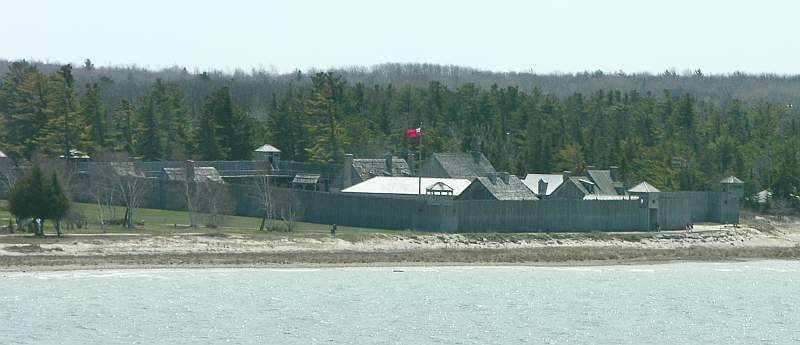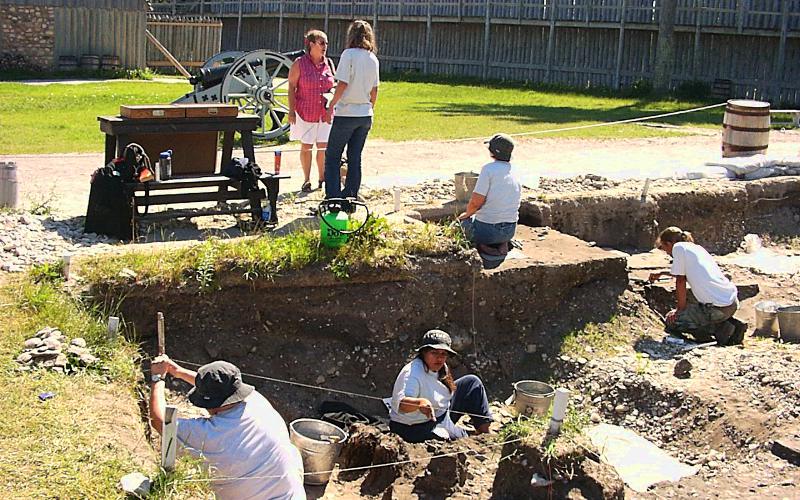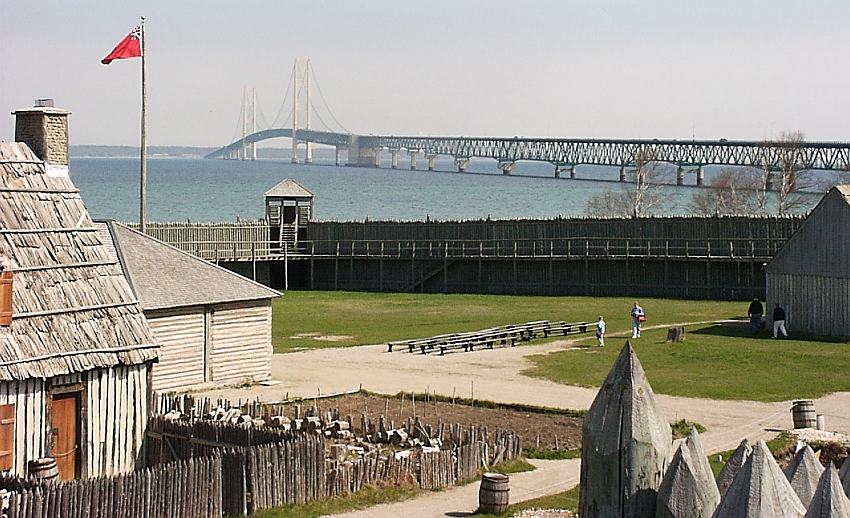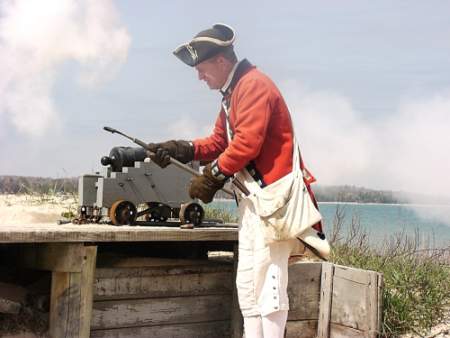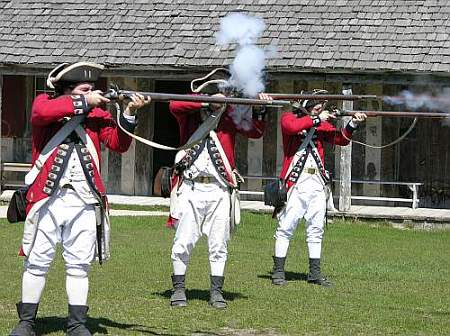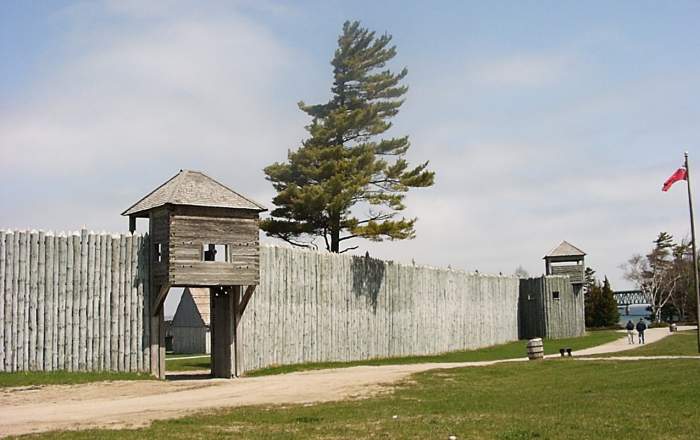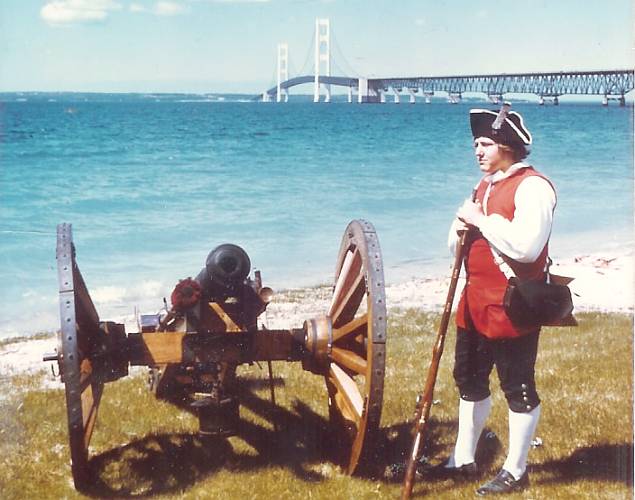| Fort Michilimackinac in Mackinaw City, Michigan
was originally built by the French in 1714-1715 to control the fur trade
and European development of the upper Great Lakes. Michilimackinac was
more of a fortified community than a military outpost. The colonial community
was located both inside and outside the walls and the walls were expanded
several times during the French and British occupation of the area. There
was an Odawa (Ottawa) community along the shore when Fort Michilimackinac
was built, but the Odawa moved 20 miles west to L'Arbre Croche (present
day Cross Village) in 1741 when their corn fields were no longer fertile.
Open May - October, Colonial Michilimackinac is a great
family destination and the staff works hard to make sure that kids have
even more fun than adults.
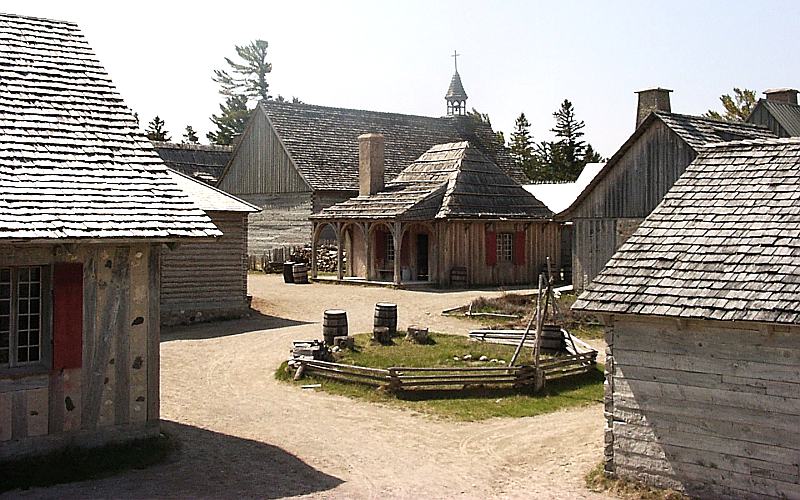
In the summer months the Michilimackinac population would
swell (much like today) as voyageurs and traders arrived from Montreal
and points east. Other trappers and traders would come to meet them from
the interior, as well as hundreds of Native Americans.
The Church of Ste. Anne de Michilimackinac was built in
1743. The church was one of the buildings moved across the ice when the
community was moved to Mackinac Island. Those parish records are still
preserved at Ste Anne Catholic Church on Mackinac Island
During the French and Indian War, joint Native American
and French forces from Michilimackinac traveled south to battle British
and colonial American troops. On July 9, 1755 those forces, led by Michilimackinac's
Charles
de Langlade participated in the defeat of General Edward Braddock and
a young George Washington at the Battle of Monongahela River in
Pennsylvania.
The French garrison departed the Mackinac Straits at the
conclusion of the French and Indian War and British troops arrived 1761.
The French civilian community remained and encouraged the Native Americans
to drive out the English. During Pontiac's Uprising in 1763, Native Americans
defeated the British garrison, using the subterfuge of a baggataway (lacrosse)
game to take the British unexpectedly. Many of the British were killed
with some taken prisoner. The French population (which far out numbered
the British) was unharmed. Alexander Henry was one of the English
fur traders who was taken prisoner and his journal provides a fascinating
glimpse of life at Michilimackinac at the time, as well as the battle and
his life with family of Chief Wawatam during the following year.
With Pontiac's Uprising's lack of success in Detroit,
British troops were unopposed when they retook Fort Michilimackinac in
1764. Native American and British relations improved over the following
years and by the time of the American Revolution, Indian forces from the
region participated in the war on the side of the British.
The most famous British Commander at Michilimackinac was
Major
Robert Rogers who was Commandant from 1766-1768. A colonial farmer
from New Hampshire, Rogers created a the French and Indian war unit called
Rogers'
Rangers. He was portrayed by Spencer Tracy in the movie
The Northwest
Passage.
Soldiers from the 10th Regiment of Foot were transferred
from Fort Michilimackinac in 1774 and participated in the Battles of Lexington
and Concord in 1775.
The Fort was relocated to the new Fort
Mackinac on Mackinac Island during the American Revolution, with
some of the buildings moved across the ice in the winter of 1780-1781.
The remaining structures were burnt to the ground. |
